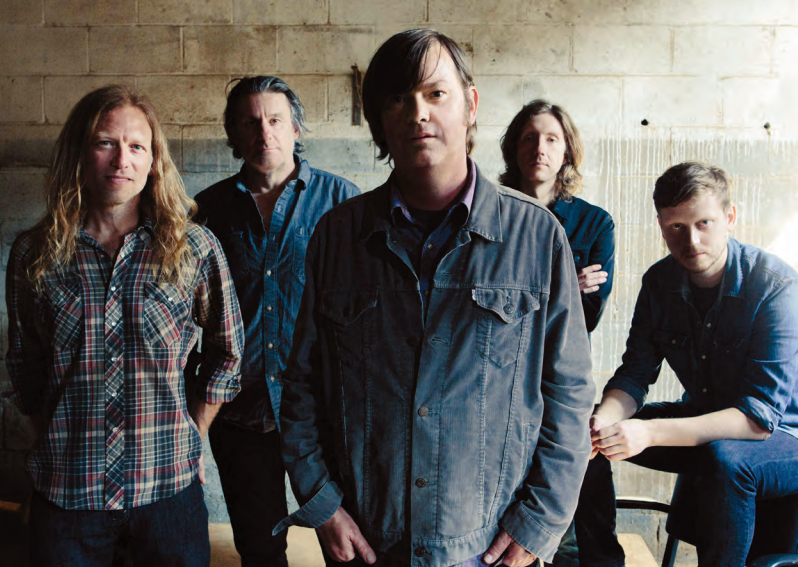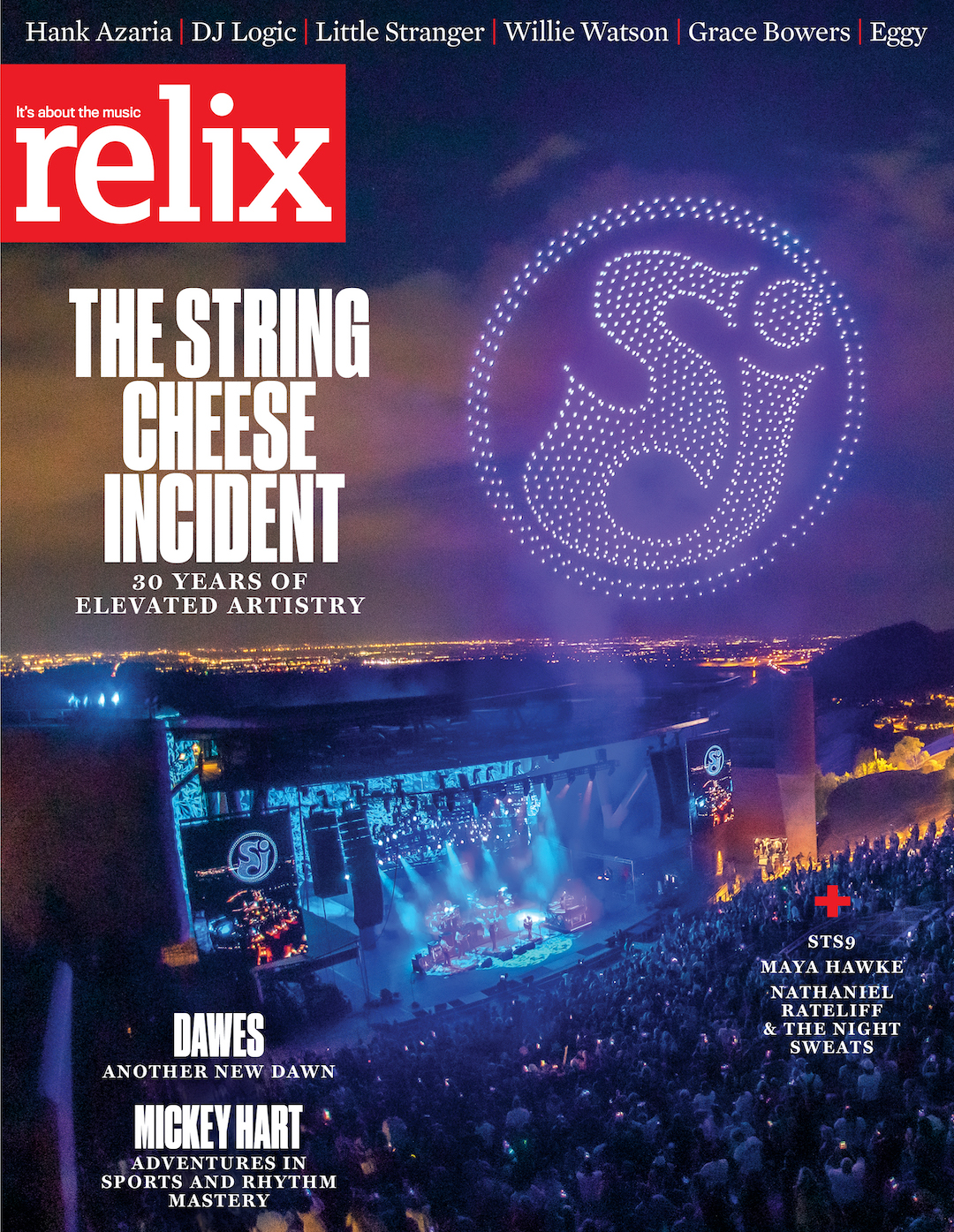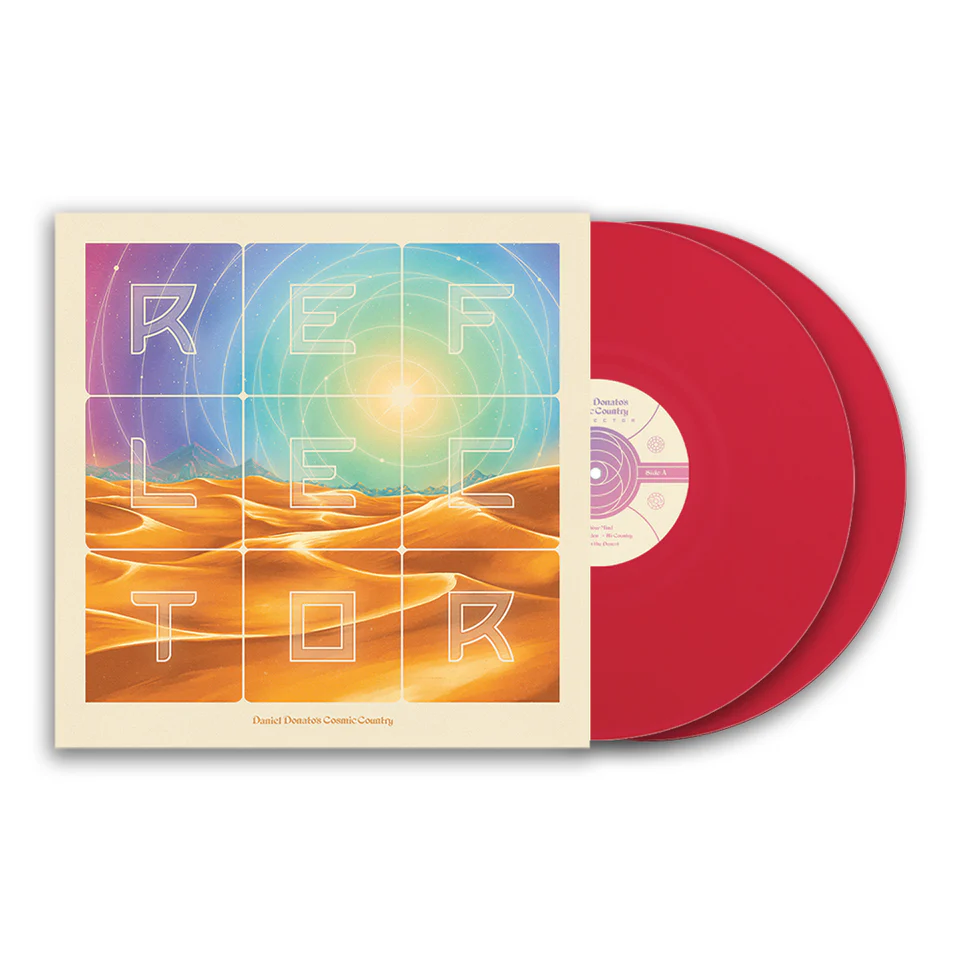Track By Track: Son Volt’s ‘Notes of Blue’

“I’ve always wanted to do a recording that focused more on the blues. I’ve done a few blues-inspired songs over the years, but this recording was a chance to expand on it and, in particular, I wanted to explore the tunings and guitar voicings of Skip James and Mississippi Fred McDowell,” Jay Farrar explains, when detailing the origins of Son Volt’s new record, Notes of Blue.
However, Farrar did not solely draw inspiration from these two pioneering Delta blues players. He also identifies enigmatic British folk musician Nick Drake as an influence. Drake passed away in 1974 at age 26—in relative obscurity— after recording three albums, the best-known of which is 1972’s Pink Moon. Farrar points to that title track, noting, “There’s something magical about that tune in particular. There’s just a haunting effect when you listen to his music. He’s a master of his craft, and I don’t know if there’s ever been anyone before or since truly like him. He’s one of the icons that I hold up there.”
Initially, Farrar had two projects in the works, one of which he identifies as a Nick Drake-style English folk record.” However, while working on this material and performing acoustic shows for nearly two years, Farrar had a hankering to pick up an electric guitar, “and that meant a Son Volt record.” So he simultaneously began writing blues-based songs, with the two endeavors eventually converging.
Farrar first recognized this nexus through the sounds of another artist who is relatively unknown outside of musician circles: Jackson C. Frank, whose lone album released during his lifetime, before he passed away in 1999, was his 1965 eponymous record produced by Paul Simon.
“I was listening to Jackson C. Frank,” Farrar remembers. “In fact, there’s a bonus track of one of his songs called ‘Yellow Walls,’ which is offered on the website. Through learning more about Jackson C. Frank and finding out that ick Drake was a fan of Jackson C. Frank, and that both those guys were way into blues, there was a common theme, a common thread that brought both of the writing projects together.”
Farrar adds: “There’s quite a bit of commonality there; that’s ultimately the conclusion I came to. Fingerpicking was one of the parallels. I had wanted to do more of that—I’ve only really fingerpicked guitar on one Son Volt recording, the song ‘Medication’ on the Son Volt record Okemah and the Melody of Riot. I’ve just never really had the confidence to sit down and do it. But then, over the course of playing pedalsteel guitar in a honky-tonk band, I got more accustomed to fingerpicking, and I wanted to do more of it on this recording. That was one parallel that I saw between Skip James and Nick Drake. And, of course, I think Nick Drake was pretty heavily into the blues as well.
“Ultimately, I was aiming for where blues and folk and country converge. Getting back to playing electric guitar after a few years was a component, but it’s a folk record, it’s a rock record, it’s a blues record—it’s all of those.”
PROMISE THE WORLD
“Promise the World” was inspired by Nick Drake’s “Pink Moon.” I originally wanted to do an entire English folk-inspired recording because I’ve always been mesmerized by Nick Drake’s Pink Moon album in particular. The pedal steel and the fiddle on this song a e a bridge to the previous Son Volt record, Honky Tonk. That’s Jason Kardong on pedal-steel guitar, which drives the song. Ultimately, the lyrics, “Light after darkness, that is the way,” became a mantra and the genesis of the song.
BACK AGAINST THE WALL
“Back Against the Wall” was intended to be a rally song to take on adversity or to be a shield of sorts for challenges on the horizon—at least that’s the way I thought about it. It has what may be the fir t electric guitar solo I’ve recorded on a Son Volt record in 20 years.
In the studio, we re-amped the Hammond organ sound through a small amp and I got to sit next to the amp and be the vibrato switch guy, which meant clicking the switch at various intervals to create vibrato swells. So now I’ve got “vibrato switch guy” going for me on my résumé. This song also came out of the Englishfolk batch of songs that I was writing, and it just got amped up along the way.
STATIC
The approach was fundamental and primitive on this one. It’s mostly two chords with a third chord briefly th own in. Bo Diddley did all he needed to do with two chords, so I was shooting for that. The outro section— the electric slide part—is a tuning I learned from a lady at a folk festival in Canada, and that tuning utilizes all E-note octaves so, with a slide, the sound of all those E-note octaves is like a bombastic sitar.
CHEROKEE ST.
“Cherokee St.” was written with a Skip James Bentonia tuning. It’s a D-minor based tuning that supposedly has its origins in the Bahamas. This was the first electric song we recorded in the studio.
Just learning the tuning of an icon and a hero like Skip James, to me, was the reward for the process. Again, one thing in common with Nick Drake is that I’ve always felt that there was a mystique attached to his tuning, as well as a high-pitched haunting effect from his vocal style. So I wanted to get inside that tuning and see where it went.
It was a primitive setup at first, just with me on guitar and Jacob Edwards on drums. Mark Spencer added the bass later. For this song, I pulled out an old Webster Chicago amp, which I’d used on the first Son Volt record, Trace. It’s the amp that’s pictured on the cover. The amp just had the right character and sonic aesthetic for this song.
There’s a reference in the song about how the U.S. has the highest incarceration rate of any country in the world. That’s something I often think about. On the upside, there’s a vibrant street in St. Louis called Cherokee St., and that’s where the title came from—where you can see the smile of a Cherokee St. girl and get a very good taco as well. The street’s a mixture of Mexican restaurants and shops blended with a new hipster scene.
THE STORM
With “The Storm,” I wanted to explore a more fingerpicking-style guitar. Like I mentioned, the last time I recorded fingerpicking as back on the song “Medication” in 2005. Since then, I’ve played steel in a honky-tonk band and become more confident at it, so I went for it on this song, which was written in the Fred McDowell tuning.
This was the last song recorded during the Notes of Blue session. It was in the middle of February, so I was definitely thinking about California. This song was inspired by a traditional theme. To me, the storm can be a metaphor for any kind of adversity.
LOST SOULS
Over the years, since starting out in music, I’ve noticed a pattern of seeing engaging and creative bands along the way, and then never hearing them again. For whatever reason, they left the music business, and “Lost Souls” is a song to them—to the bands and performers you’d hope to see again but never did. It’s equal parts looking back at how we got here and where we go next.
Hunter S. Thompson and Captain Beefheart have some pretty powerful quotes about the music business. It was just a pattern that unfolded again and again over time. It always seemed to me that often the very best and most creative people didn’t even really have a chance to get out and tour; they just drifted away.
MIDNIGHT
“Midnight” references the traditional theme of hell and the hope of redemption. I played my guitar through an old bass amp that was lying around Red Pill Studio here in St. Louis. I played guitar through a bass amp to get a deeper, heavier-sounding guitar. Not only was it a bass amp, but it was a solid state bass amp, which all guitar players will agree is the sound of hell because it just puts out a type of distortion that’s strident and can be grating. But I thought it fit the subject matter.
SINKING DOWN
“Sinking Down” incorporates a bottleneck slide with a Mississippi Fred McDowell tuning. It’s about as low as you can go, maybe the quintessential blues tuning. The lead guitar paired with the main guitar is also using the slide but with a diffe ent tuning—all C octaves. I have a recurring daydream that the song gets pitched to ZZ Top and they do it with the whole video treatment.
CAIRO AND SOUTHERN
Cairo was a busy stopover town in southern Illinois back in the day, by boat or train from St. Louis to the south, or the other way around. Now it’s a sleepy town with not much population. It’s just a place you drive through, but it’s got some architectural gems and has potential for revitalization.
This song was played on a low-tune baritone guitar. It was also the first tune recorded for the session. The session started off spacey with this song an then we pulled out amps for “Cherokee St.” and that was the first electric song on the session. I think the meaning of “Cairo” is that it doesn’t have to be the town Cairo; it could be representative of any place you get away to find ourself through different surroundings.
THREADS AND STEEL
Everyone has experienced this guy—I’ve definitely seen him in the music business. He’s the guy who tells you, in so many words, to take your music elsewhere. Maybe there’s some Donald Trump in there somewhere, too. I had a friend in grade school who used the expression “go-to-hell hat,” and I’ve always wanted to put that in a song, so I finally got that done.



















